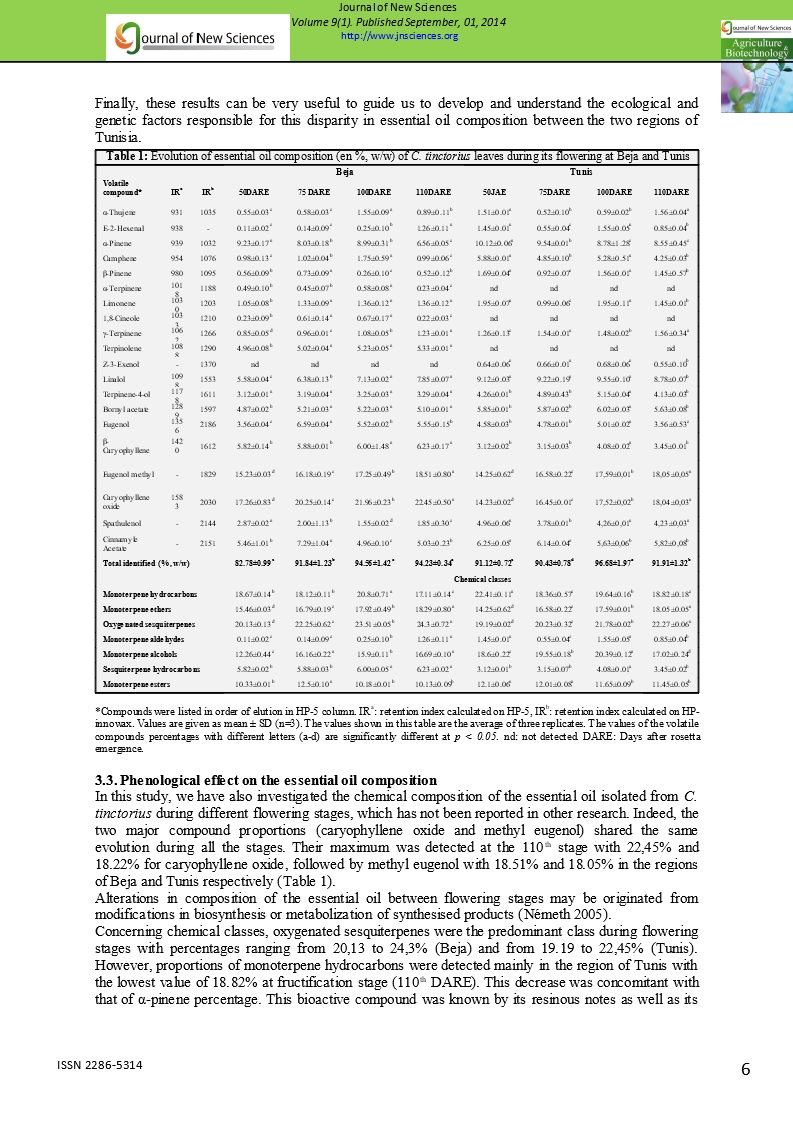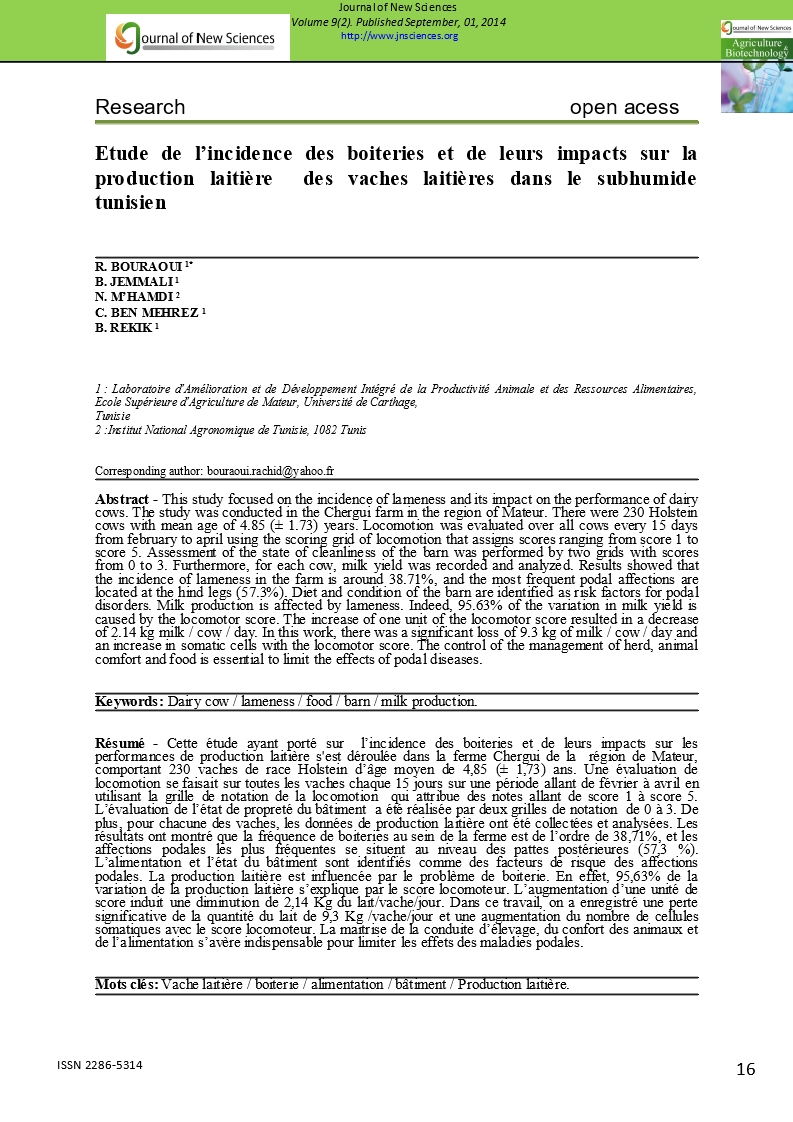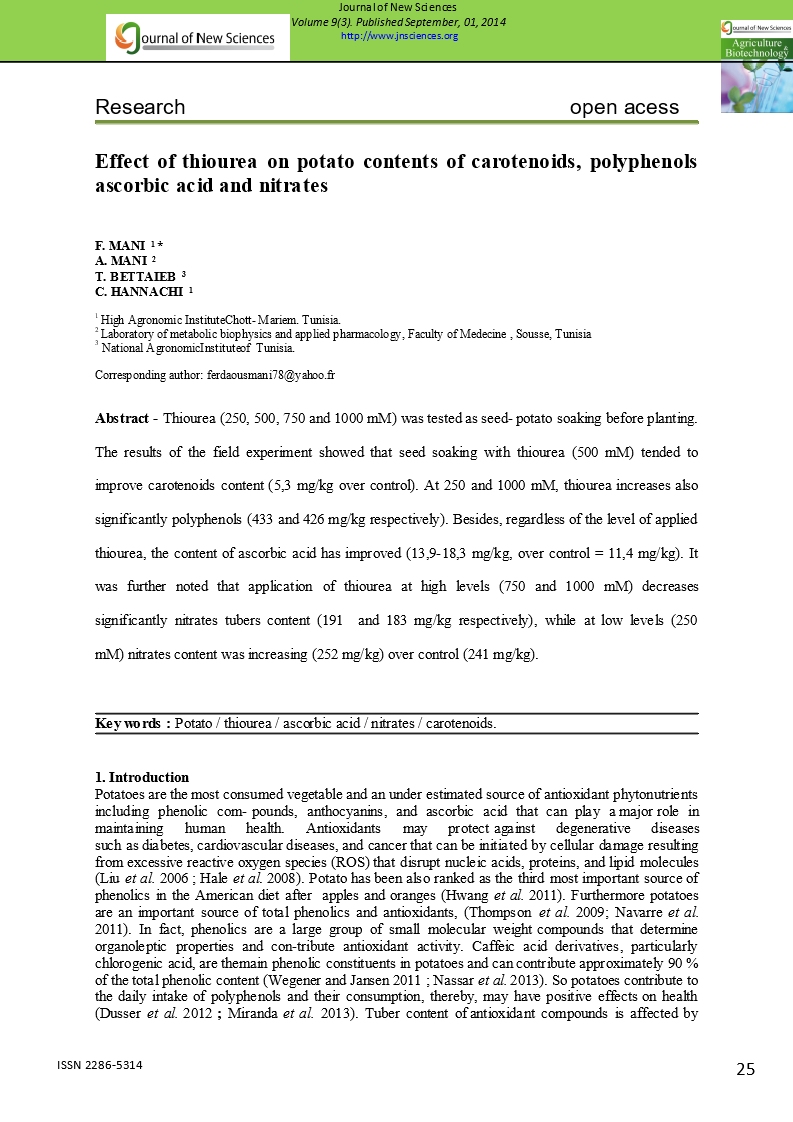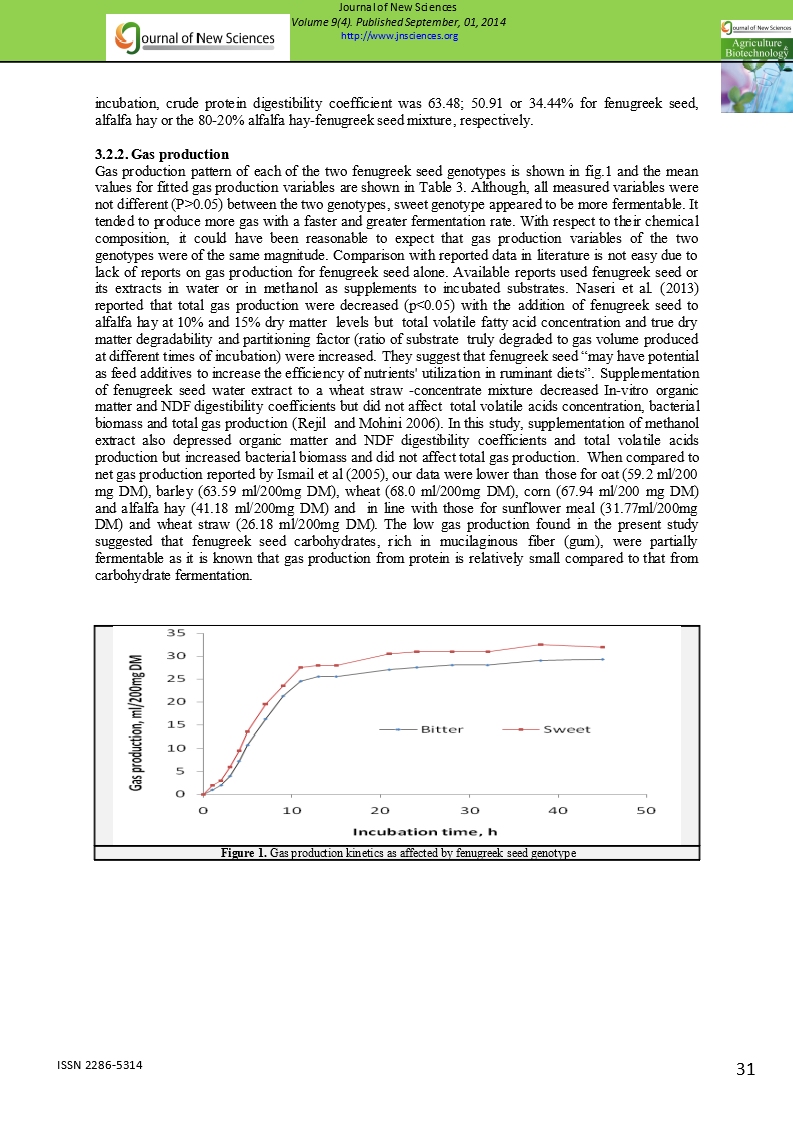R. Bouraoui1*
B. Jemmali1
N. M’hamdi2
C. Ben Mehrez1
B. Rekik1
1 Laboratoire d'Amélioration et de Développement Intégré de la Productivité Animale et des Ressources Alimentaires, Ecole Supérieure d'Agriculture de Mateur, Université de Carthage,
Tunisie
2 Institut National Agronomique de Tunisie, 1082 Tunis
Abstract - This study focused on the incidence of lameness and its impact on the performance of dairy cows. The study was conducted in the Chergui farm in the region of Mateur. There were 230 Holstein cows with mean age of 4.85 (± 1.73) years. Locomotion was evaluated over all cows every 15 days from february to april using the scoring grid of locomotion that assigns scores ranging from score 1 to score 5. Assessment of the state of cleanliness of the barn was performed by two grids with scores from 0 to 3. Furthermore, for each cow, milk yield was recorded and analyzed. Results showed that the incidence of lameness in the farm is around 38.71%, and the most frequent podal affections are located at the hind legs (57.3%). Diet and condition of the barn are identified as risk factors for podal disorders. Milk production is affected by lameness. Indeed, 95.63% of the variation in milk yield is caused by the locomotor score. The increase of one unit of the locomotor score resulted in a decrease of 2.14 kg milk / cow / day. In this work, there was a significant loss of 9.3 kg of milk / cow / day and an increase in somatic cells with the locomotor score. The control of the management of herd, animal comfort and food is essential to limit the effects of podal diseases.
Keywords: Dairy cow / lameness / food / barn / milk production.
Résumé - Cette étude ayant porté sur l’incidence des boiteries et de leurs impacts sur les performances de production laitière s'est déroulée dans la ferme Chergui de la région de Mateur, comportant 230 vaches de race Holstein d’âge moyen de 4,85 (± 1,73) ans. Une évaluation de locomotion se faisait sur toutes les vaches chaque 15 jours sur une période allant de février à avril en utilisant la grille de notation de la locomotion qui attribue des notes allant de score 1 à score 5. L’évaluation de l’état de propreté du bâtiment a été réalisée par deux grilles de notation de 0 à 3. De plus, pour chacune des vaches, les données de production laitière ont été collectées et analysées. Les résultats ont montré que la fréquence de boiteries au sein de la ferme est de l’ordre de 38,71%, et les affections podales les plus fréquentes se situent au niveau des pattes postérieures (57,3 %). L’alimentation et l’état du bâtiment sont identifiés comme des facteurs de risque des affections podales. La production laitière est influencée par le problème de boiterie. En effet, 95,63% de la variation de la production laitière s’explique par le score locomoteur. L’augmentation d’une unité de score induit une diminution de 2,14 Kg du lait/vache/jour. Dans ce travail, on a enregistré une perte significative de la quantité du lait de 9,3 Kg /vache/jour et une augmentation du nombre de cellules somatiques avec le score locomoteur. La maitrise de la conduite d’élevage, du confort des animaux et de l’alimentation s’avère indispensable pour limiter les effets des maladies podales.
Mots clés: Vache laitière / boiterie / alimentation / bâtiment / Production laitière.




